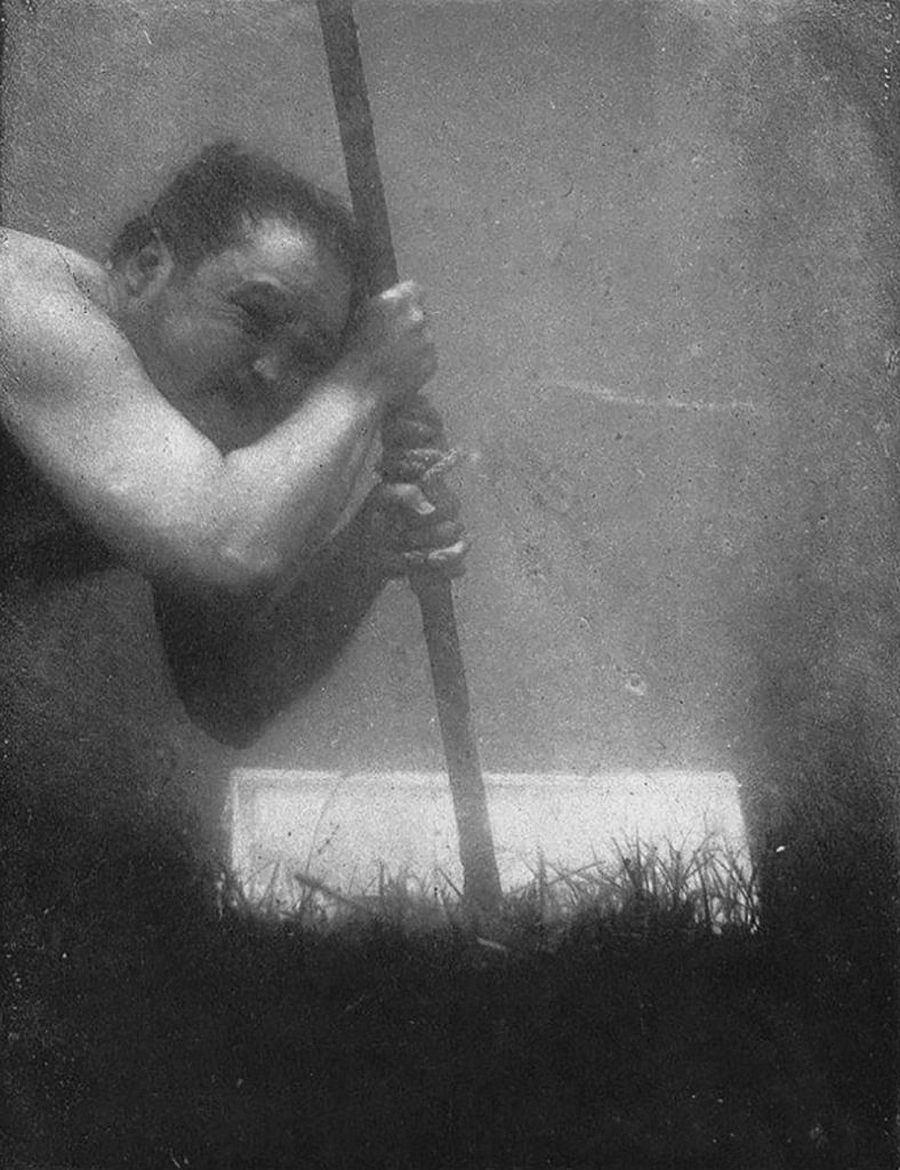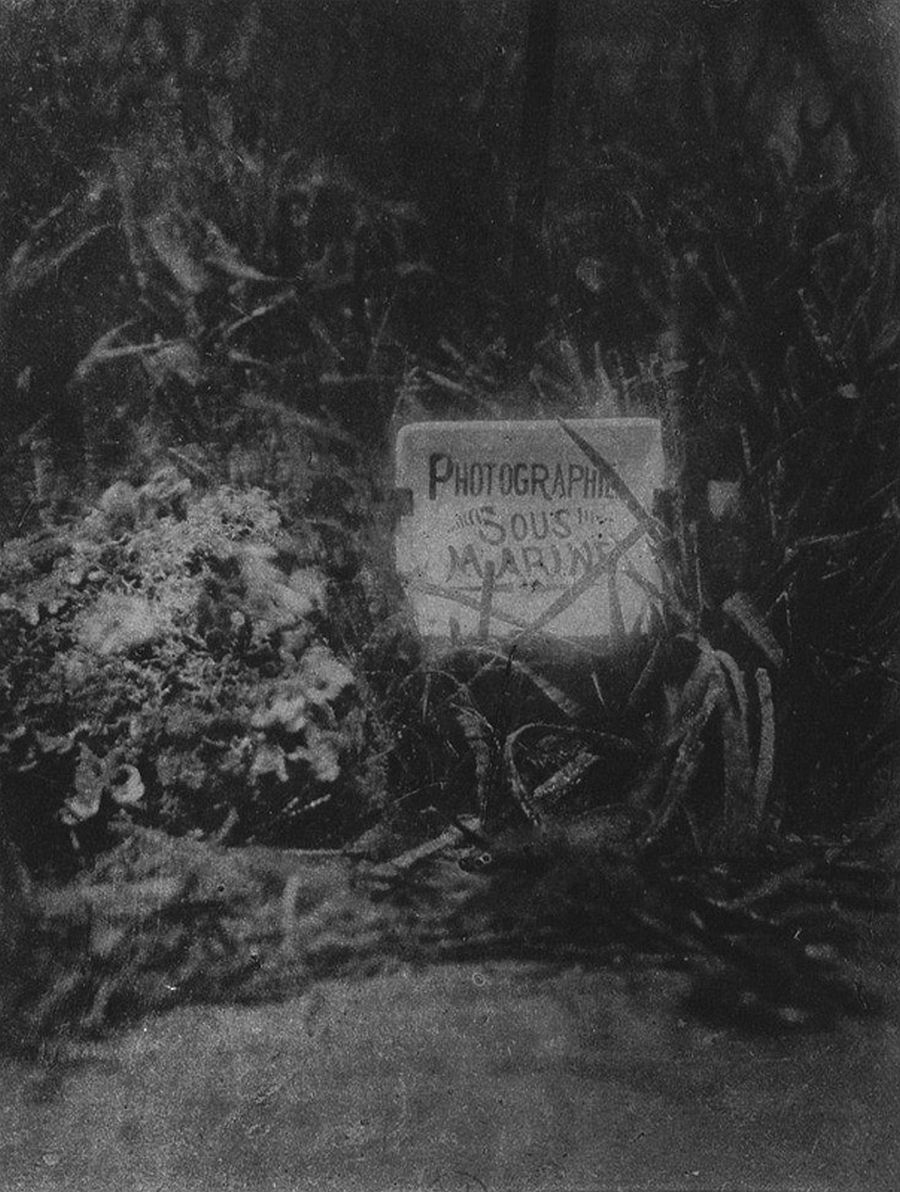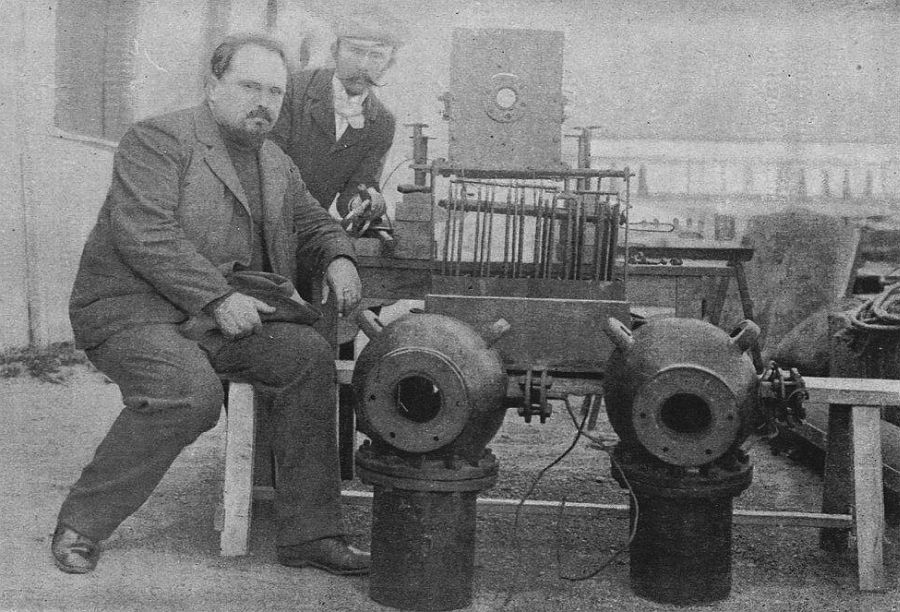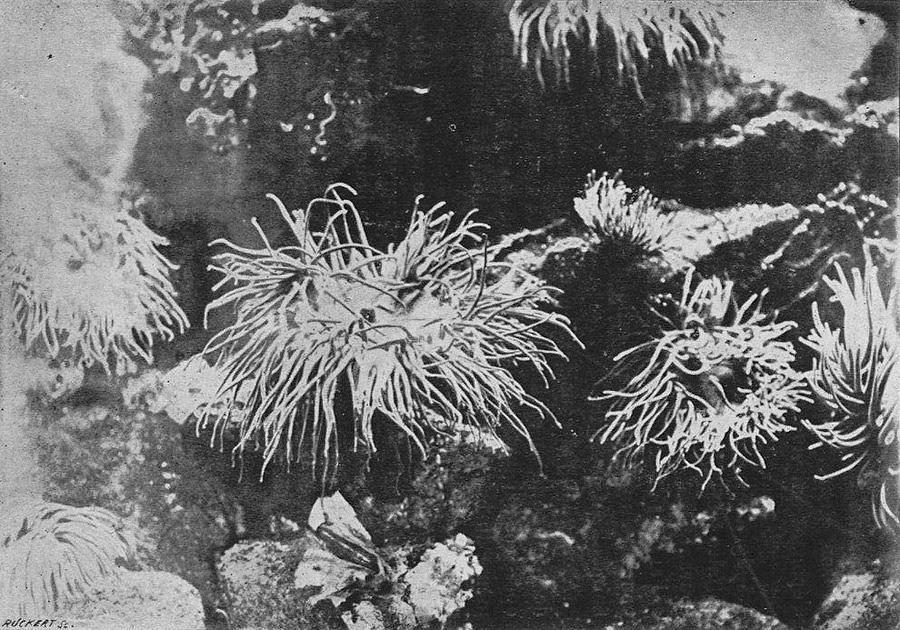Louis Boutan was a French biologist and a pioneer in the field of underwater photography that would be unmatched by anyone else for decades. He was born in Versailles and studied biology and natural history at the University of Paris where he became a lab assistant at the age of 20.
In 1880, he was named deputy head by the Ministry of Public Education just one year later and assigned to organise the French exhibit at the Melbourne International Exhibition, the eighth World’s fair officially recognised by the Bureau International des Expositions (BIE) and the first official World’s Fair in the Southern Hemisphere. Invested in naturalism, he stayed in Australia for 18 months, travelling the continent and identifying new animal species including the grape phylloxera found in the Australian vineyard and — while diving naked in the Torres Strait. The mother-of-pearl producing mollusks famously captured his imagination. He also collected a large number of giant clams during the trip home, which concluded on March 9th, in 1883. Upon his return, Boutan continued his research.
In 1886, Boutan was named maître de conférences at the University of Lille. It was here that he first began to imagine the possibilities of underwater photography. In the same year, he learned how to dive. In 1893, he was named professor at the Laboratoire Arago. The Arago Laboratory is situated above the bay at Banyuls-sur-Mer, a small fishing village close to the Spanish border, which, for centuries, had a strong sideline in smuggling. Arago was opened in 1882 by Henri de Lacaze-Duthiers, a highly respected zoologist from the University of Paris, for the study of marine biology.
During that year, with his brother Auguste, he developed equipment for underwater photography. In an article in The Century Illustrated Monthly Magazine, he described his apparatus; the article included an illustration of one of his cameras and several underwater images. Boutan developed a flash bulb that could be used underwater. He later used carbon arc lights for illumination.
Boutan’s first dive to examine the mollusks that so interested him took place there in 1886, but it was only after he joined Lacaze-Duthiers in Paris five years later that he began to refine his ideas about underwater photography. The experience of diving appears to have been revelatory for him. He later recounted, “It was all so beautiful and so strange that I often found myself longing to be able to sketch or paint the scene, so as to be able to bring up to the surface a souvenir of what I had seen below.” Boutan resolved to photograph these “submarine landscapes.”
By the early 1890s, photography had come a long way since Louis Jacques Mandé Daguerre introduced his eponymous daguerrotype to the world in 1839. Despite the advances, the process still required glass or metal plates, chemicals, and carefully calculated exposure times. Boutan recalled his own doubts as to whether the underwater environment was suitable for taking good photographs.
Boutan wasn’t the first to experiment with underwater photography. In 1856, an English solicitor William Thompson rowed out into Weymouth Bay, Dorset, to see what he could achieve with a wet collodion glass plate camera housed inside a specially made wooden box. He lowered the box 18 feet into the water and, using a length of string, pulled the shutter. The result is regarded as the world’s first underwater image, though the resulting photograph depicts only murky greys. However, Boutan knew that there were two major issues to contend with in underwater photography: pressure and light. So, like any good scientist, he began to experiment.
The first apparatus he designed, with the help of his brother Auguste, an engineer, was a detective camera (a small inconspicuous style of camera for the time) in a waterproof copper box. A lever operated the shutter and plates, and a rubber balloon, linked to the the box via a tube, squeezed air into the box as it descended and the pressure of the water built up. Boutan first tried to use this device in 1893, but he found the results “uniformly beclouded.”

He continued to experiment, using a blue filter to offset the cloudiness, and moving to the neighboring bay of Troc for better visibility. Then, in 1896, he tried something completely new: a camera in which the plates were left unprotected from the water. He used specially varnished plates to counteract the effect of the salt water, but the results were, in Boutan’s words, “mediocre.” So he revisited his first apparatus, with improvements. He made the lens astigmatic to account for refraction. The box that held the camera was made of iron, not copper. These additions added some complications: It took three men to move the device. The new lens could not be focussed by pointing it down at the sea bed, so the camera had to be lowered just beneath the surface using a pulley. Boutan placed a slate containing writing at a fixed distance from the lens and adjusted the focus accordingly.
Whether Boutan was himself submerged to take the photograph (in a metal-helmed diving suit) or not depended entirely on depth. If he was diving he would get into position and signal, via a rope, for the captain to lower the apparatus, in three parts: the stand, followed by the box itself, then a weight to stabilize the whole thing. Once set up, he signaled, via the rope, for the captain to start timing the exposure. The captain would then tug on the rope when the time was up, Boutan could close the shutter, and both he and his contraption could return to the surface.


On other occasions, Boutan simply lowered the camera from a boat and pulled the shutter with a cord, just as Thompson had done in Weymouth Bay decades before but with a tweak.
Throughout his experiments, Boutan, like modern underwater photographers, was forced to address the critical problem of light. He tested different apertures and, along with electrical engineer M. Chaufour, created what was essentially an underwater flashbulb from a glass bottle containing oxygen and a magnesium wire that could be ignited with a current. But it was unpredictable. The bottle could explode or the light could be obscured with vapor or shine unevenly.

He searched for another light source, but in the end, a light source found him. An optical manufacturer had produced two telescopes to photograph the stars for the 1900 Paris exposition, and wanted to include in his display images of the ocean. The president of the company wrote to Boutan and offered whatever he would need to create an underwater electric light source—with the proviso that any photographs Boutan took would be used in the exposition display.
With this much-needed round of funding, Boutan built two battery-powered underwater arc lamps that could burn, submerged, for half an hour, though it took 70 hours for a steam engine to charge them. Boutan tested them one moonless night in August 1899, and after another dissatisfying result, he repositioned the lamps on either side of the camera, and lowered the entire apparatus to 165 feet. His choice of subject was a submerged sign that read “Photographie Sous-Marine.” It took an hour to haul the equipment back on board, the total weight of which was between 1,100 and 1,320 pounds. But it had been worth it. Despite the depth, the image was sharp and clear.
He published the first book on underwater photography La Photographie sous-marine et les progrès de la photographie. Slides of his underwater photographs were shown at the 1900 Exposition Universelle in Paris.

Through his relentless experimentation, Boutan created photographs the world had never seen before. He took an underwater self-portrait, his cheeks comically puffed with air. And he took a portrait of a diver, his assistant, Joseph David, on an autumn morning in the bay of Troc, using his third and last underwater device.
In 1904, he was sent to Hanoi to investigate improvements to rice and the culture of pearl oysters. He returned to France in 1908. In 1910, he was named professor of zoology and animal physiology at the University of Bordeaux. In 1914 and 1916, Boutan and his brother worked on a diving suit for the French army.
After the war, he began research into the artificial production of pearls, one of the first people to investigate this subject. In 1921, he was named director of the Station Biologique d’Arcachon. In 1924, he was named to the chair of general zoology of the faculty of science at the University of Algiers; he was also named director of the Station d’Aquaculture et de Pêches de Castiglione and inspector for the Algerian fisheries.
In 1929, he retired to Tigzirt in Algeria. He died there at the age of 75